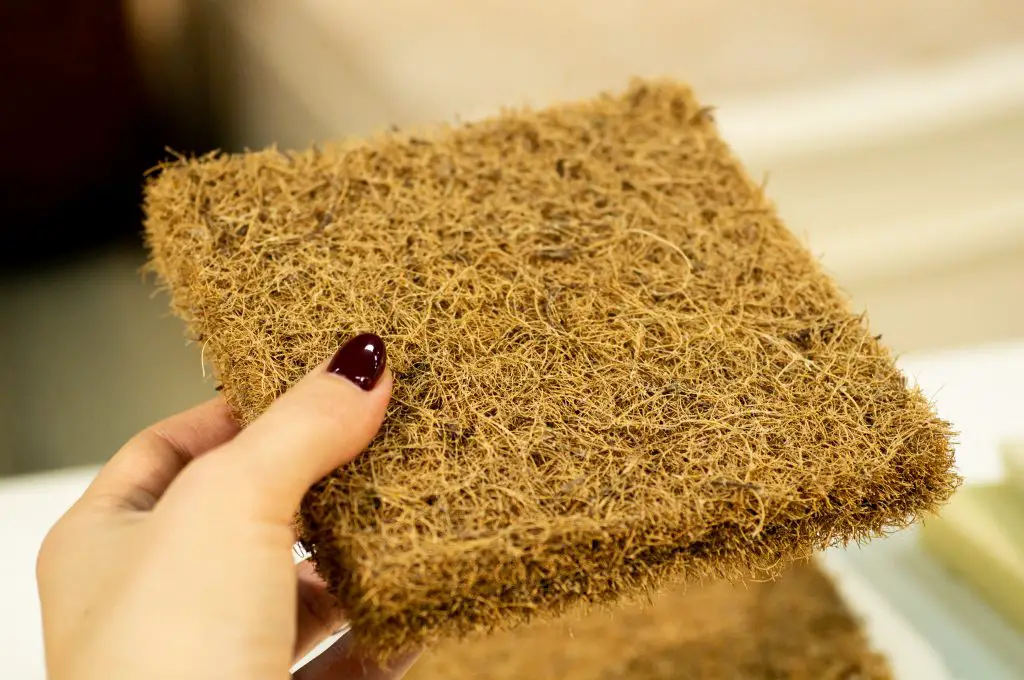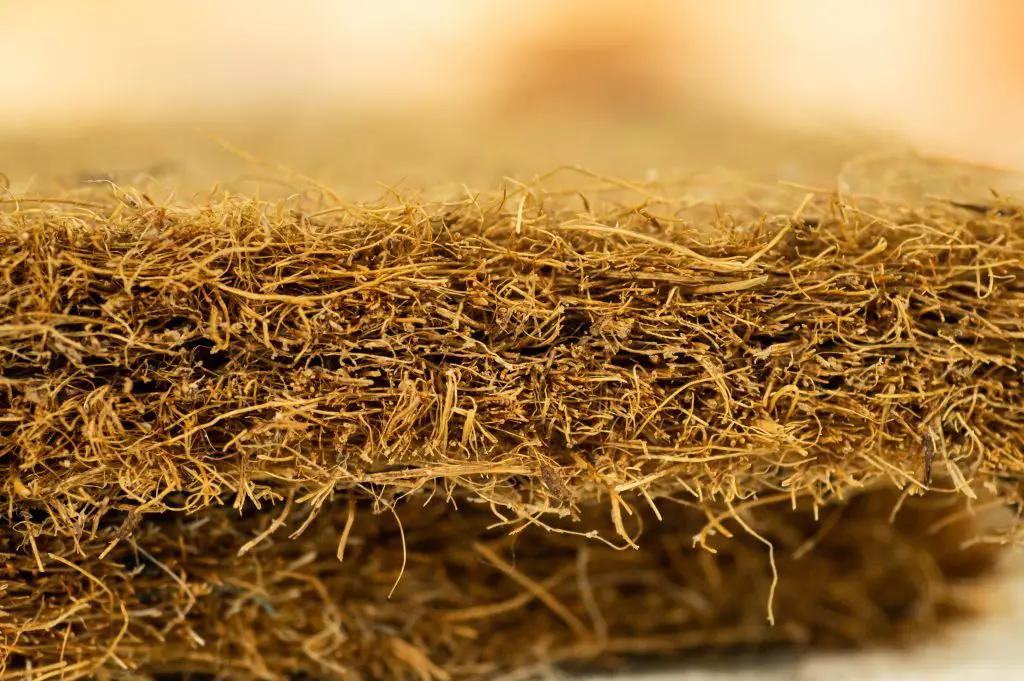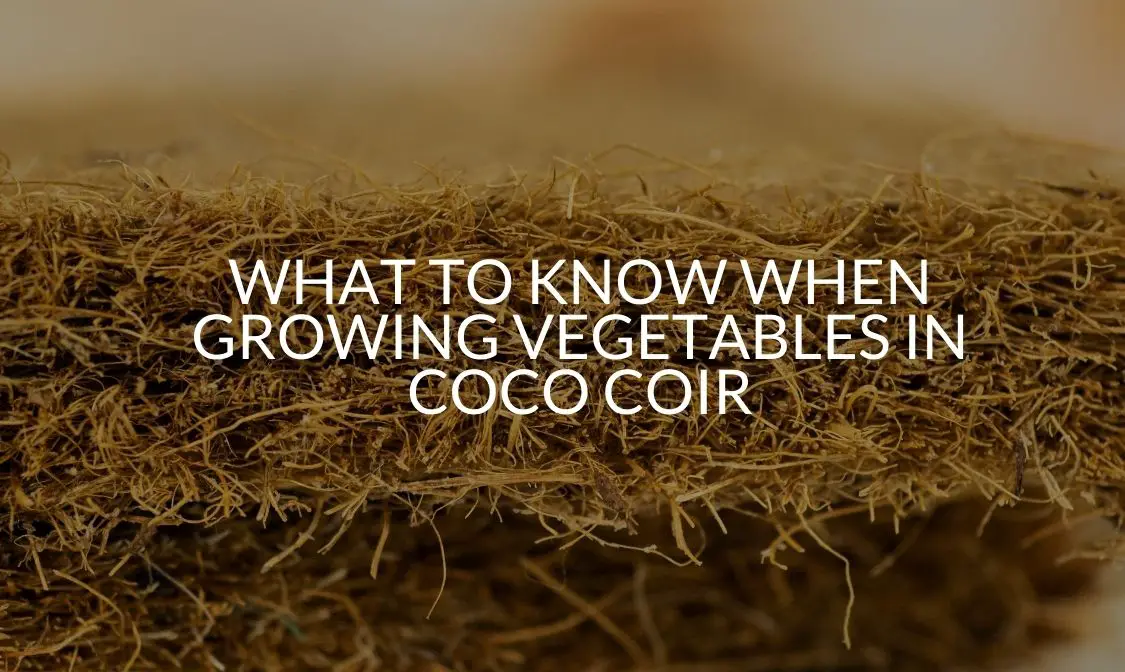There are a million ways to grow vegetables but in recent years, the use of coco coir has skyrocketed in popularity.
If you don’t know what this medium is or how to use it, you’re in luck! Today we’re going to discuss one of our favorite topics — growing vegetables in coco coir. This article will cover how, exactly, to use the medium, the benefits and disadvantages of its use, and ways that you can maximize your vegetable yield when using the medium.
How Do You Grow Vegetables in Coco Coir?
Prep The Coco Coir
To start, you’ll want to prepare the coco coir to get it ready for use. If you’ve purchased it in a bag, this might not be necessary but if you’ve bought the pre-formed blocks of coco coir, this is your first step.
Unwrap the blocks and place them in a large bucket. From here, follow the instructions on the back of the blocks to ensure that you use the right amount of water to hydrate them. Allow them to sit to soften up.
Mix
Mix the coco coir up using your hands. If there is too much water, squeeze the excess out. You want the material to be soft and loose after you’re done with it.
Then, also during this step, mix your coco coir with whatever drainage medium you plan to use. You’ll also want to add your fertilizers, vitamins, and other nutrients at this point. Be sure to mix everything up so the additives are dispersed evenly.
Pot
Gather your pots and containers or head out to the garden to get started with this step. Fill your growing area with the coco coir mixture and, if you’re planting seeds, dig the appropriate holes and place your seeds.
Cover the seeds up. If you’re replanting an established plant, do this with care.
Water
If you think your vegetables or seeds need more water, feel free to give them some after you’ve covered them with dirt. Remember, though, the coco coir is likely already fairly damp from being soaked and too much water will cause root rot and inhibit growth.

What Are the Benefits of Growing Vegetables In Coco Coir?
Reusable
Most soil is a one-use product. Coco coir, however, is one of the few materials that can be used and reused time and time again. Unlike other potting soils, such as peat, coco coir is structurally sound enough to be able to be used more than once.
When attempting to reuse coco coir, it’s important to remember to remove any sticks, branches, or plant parts from the substrate before reusing. It’s also critical to complete a buffering process before using the material to grow a new plant.
Eco-Friendly
Coco coir is one of the most sustainable potting materials on the market and as such, it’s eco-friendly and guilt-free to use. It’s made from the leftover byproducts of coconuts during harvest season, with each new season bringing new coconuts and new coco coir.
Coco coir can and does break down in landfills, which is where it goes if it’s not used in the garden or for other purposes, but it can take up to a century to fully disintegrate. Using it in the garden is a much better option — not to mention a natural option.
Neutral pH
Most garden vegetables thrive in neutral to slightly alkaline soil and, as it turns out, coco coir is a neutral growing medium. This makes it ideal for a variety of different garden vegetables including cauliflower, bok choy, onion, and spinach.
The natural neutral pH levels of coco coir mean that you, the gardener, don’t have to add any chemicals to the soil to prepare it for neutral-loving vegetables.
Improves Soil Drainage
As long as it’s not in peat form, coco coir is a great additive to improve soil drainage. It acts like vermiculite in the vein that it breaks up the soil, giving water routes to use to drain away from plant roots.
It’s in this way that it also does wonders for aeration purposes when mixed with other soil mediums and watered lightly.
Affordable
Coco coir, when compared to commercial potting mediums, is incredibly affordable. This is because it’s a natural product with no additives that would have costed the manufacturing company money to include in the mix.
It can be purchased in very generous bags and tends to last a long time, significantly reducing the number of times that you have to go to the store for more potting soil and effectively saving you cash.
In fact, some coco coir users purchase coco coir less than once every few years simply because they can reuse their original bags repeatedly.
Retains Water
The peat form of coco coir is known for its incredible water retention properties. This makes it a great choice for plants and vegetables that thrive in moderately wet conditions. It’s also ideal for gardeners who frequently run short on time and are prone to neglecting their watering duties.
Sustainable
Not only is coco coir eco-friendly in the way it’s manufactured, but it’s also sustainable when recycled. This is, of course, a major plus for anyone who cares about the health of the planet and wants to do their part.
Even if this isn’t your biggest priority, it’s still nice to know that using coco coir instead of certain other materials is helping Mother Nature.

What Are the Downsides of Coco Coir?
Possible Water Retention
While the fact that some forms of coco coir retain a lot of water can be a good thing, it can also be a bad thing. In its peat form, coco coir tends to hold onto water, which can lead to root rot if the material isn’t mixed with another type of soil and additional aeration products like vermiculite.
Lack Of Nutrients
One of the few complaints that gardeners have with coco coir is that, by itself, it lacks nutrients. When you use it, you’ll need to add your own vitamins and fertilizer to it — it won’t come with any included in the mix.
Hard To Find
Although it’s a popular medium, it’s surprisingly hard to find. If you live in a small town, chances are that your local hardening store won’t carry it. You’ll need to purchase it online if you want to get started with growing vegetables in coco coir.
Sure, ordering it online is pretty convenient but again, if you live in a very small town or a rural area, ordering a bag could mean taking a trip to the nearest post office, which could be miles away depending on where you’re located.
Requires Preparation
If you’re looking for a growing medium that is ready-to-use coco coir isn’t the substrate for you. Before you use it, you must prepare it which often means soaking it. It can also mean adding things and essentially creating a soil mixture with coco coir.
One way to get around this minor inconvenience is by mixing up a big batch of your coco coir substrate – including all the necessary additives – and storing it in a container with a tight-fitting lid until you’re ready to use it.
To prevent mold growth, allow the coir to dry out before closing the lid. You can also rehydrate it before you use it next time.
How Can You Improve the Yield of Vegetables in Coco Coir?
In some situations, the use of coco coir has been thought to improve the overall yield of a garden but whether it works as an effective, yield-improving medium or just serves as a regular, nothing-special medium depends on how you use it and what you use it for.
Generally, though, you can use it to improve your yearly yield by mixing the material with a drain-savvy material and learning how to use it properly, which can be done by doing just a bit of research on the world wide web.
One other tip, though, is knowing which vegetables do best in the neutral pH levels that coco coir promotes. When you know this and plant your garden accordingly, you’ll see a rewarding yield each season and, as your coco coir skills grow, the yield will multiply from year to year.
Recap
There you have it! The fundamentals that you need to know before using coco coir to grow vegetables. To recap, coco coir is super easy to use and, aside from preparation, doesn’t require much more effort than other medium does.
The benefits are endless, ranging from enhanced water retention, a neutral pH level, and improved soil drainage to affordability. Its drawbacks include the fact that it requires preparation before use, can retain too much water, and can be hard to find in stores.
To improve the yield of your vegetable gardens that have coco coir, it comes down to understanding how the material works and the best way to use it. It also helps if you know which vegetables do best in the conditions that coco coir creates.

